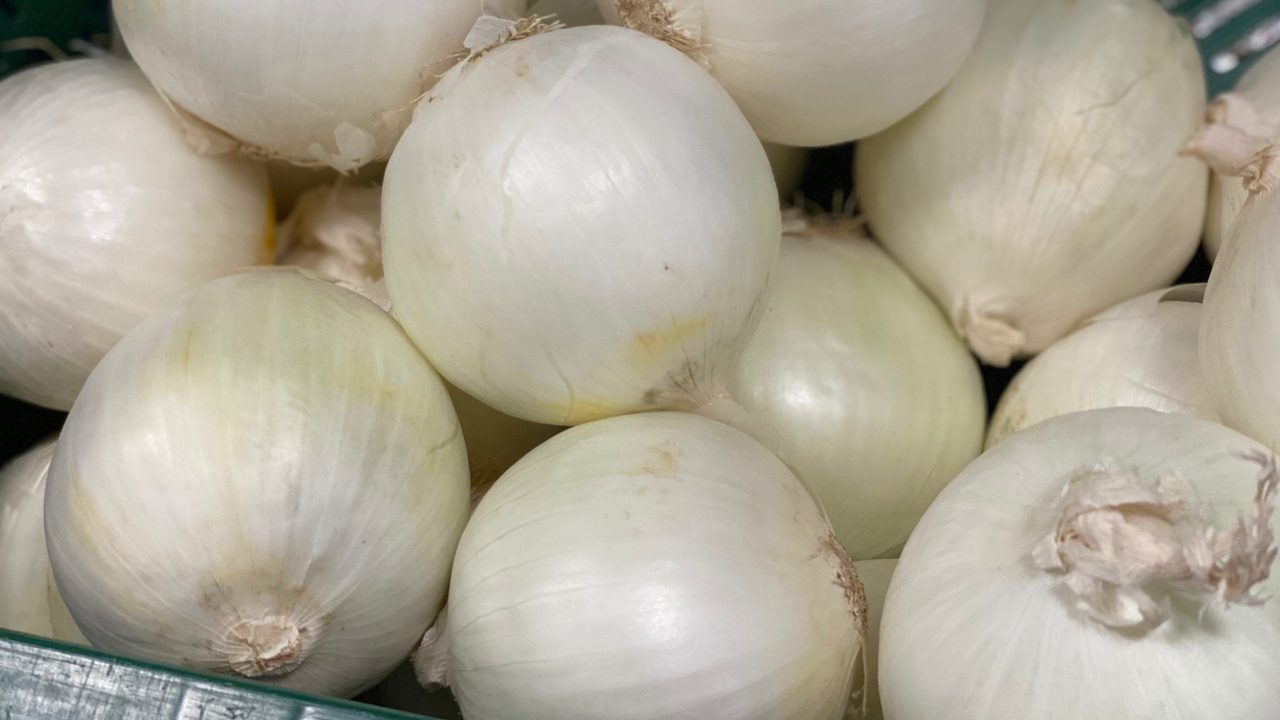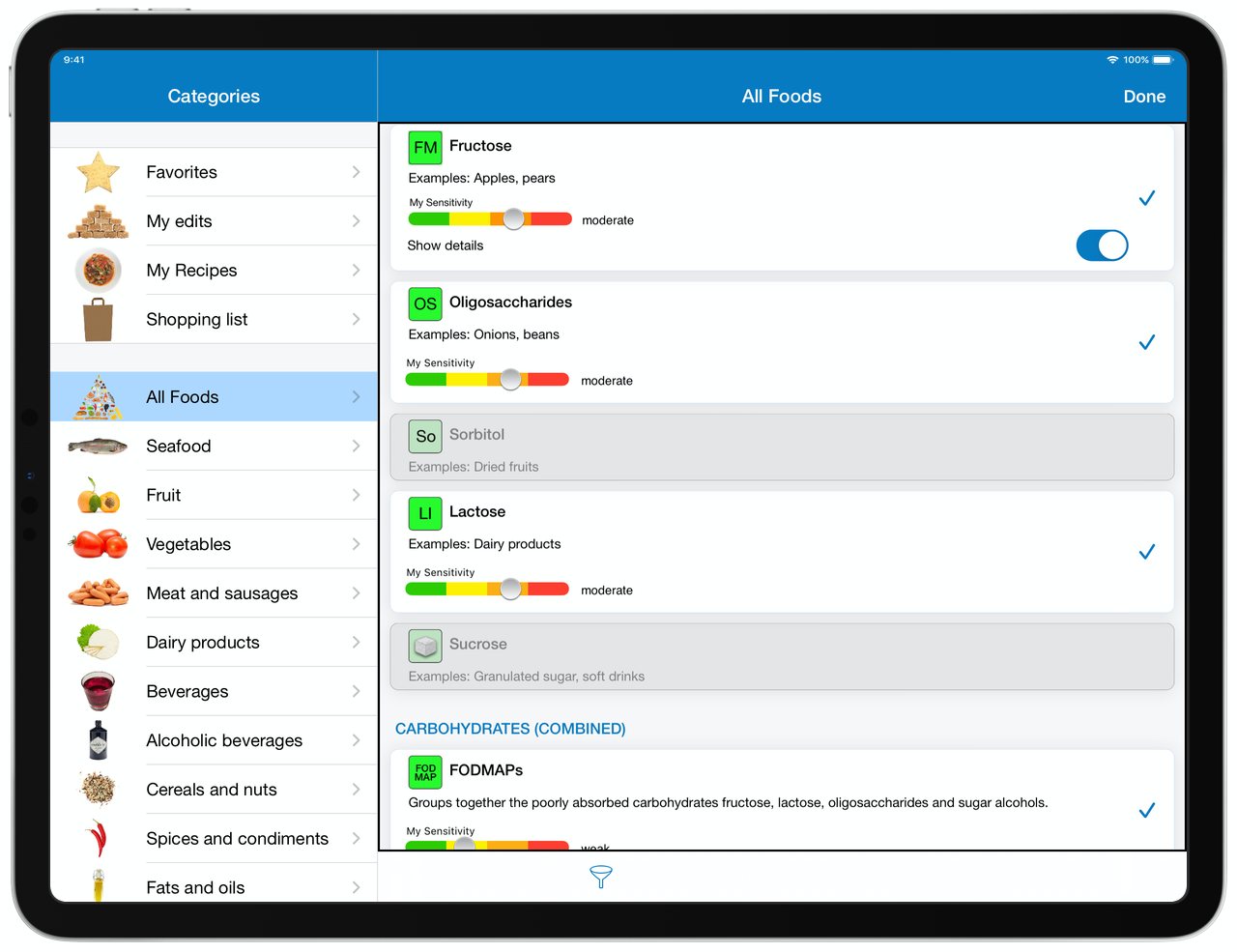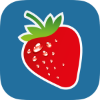How the low FODMAP diet can be used to manage IBS
09/03/2020 Food Intolerances
More and more, the low FODMAP diet is successfully used for the treatment of irritable bowel syndrome. And with the proper guidance it can easily be adopted: By avoiding certain carbohydrates that cause problems when eaten in large quantities you can significantly reduce the stress on your digestive tract. We explain the principles of this approach as well as its limits.

The term FODMAP is an acronym derived from "Fermentable Oligo-, Di-, Monosaccharides And Polyols". It is the generic term for certain kinds of short-chain carbohydrates that are poorly absorbed while they travel through the small intestine.
The following compounds are summarized under the term FODMAP:
FODMAPs have a very strong osmotic effect, which means that they attract water molecules from their surroundings. Picture sprinkling salt on a slice of cucumber: After a short time you see small water droplets emerging, because the salt attracts water from the cucumber cells. When large quantities of poorly absorbable carbohydrates reach the colon, they trigger a water influx and prevent the colon from properly dewatering the stool.
The increased stool volume causes a feeling of discomfort and leads to loose stools or even diarrhea. At the same time FODMAPs are readily fermented by the colonic microflora, which leads to a rapid production of gases that expand the colon even further. The intake of large amounts of these carbohydrates may therefore worsen the symptoms of irritable bowel syndrome (IBS) and inflammatory bowel disease (IBD).
Reducing the intake of poorly absorbable carbohydrates reduces stress in your intestinal tract and usually leads to a rapid improvement of digestive problems. You normally try to avoid FODMAPs as much as possible for several weeks. Our app Food Intolerances has an extensive food database and helps you select FODMAP-friendly foods.
After a period of 6–8 weeks you will have to evaluate whether the diet has helped to relieve symptoms and improved your well-being. If that's the case, you can slowly start reintroducing FODMAPs into your diet, with the goal to remain symptom-free while eating as balanced as possible.
Unfortunately, this dietary strategy usually can't heal your IBS. It can however be used to manage symptoms and to possibly identify underlying causes.
Restricting the intake of FODMAPs has some downsides. Most of them selectively also feed beneficial gut bacteria. Cutting down the intake of these so-called prebiotic substances may alter the composition of the intestinal microflora – and to date, no one really knows what the long-term consequences of this diet are. Therefore, you should use a gentle approach and evaluate your tolerance level. By no means should you try to eliminate FODMAPs entirely from your diet – a certain amount is absolutely desirable. The largest proportion of FODMAPs in our diet comes from lactose and fructose, so cutting down on these sugars offers the largest "savings" potential. You can use the manifold setup options in our app to either select all FODMAPs or only a subset, depending on your requirements (see screenshot 1). This gives you great flexibility to experiment and helps you diversify your meals again without the fear of adverse reactions.

▲ Screenshot 1: Flexible setup for FODMAPs in the Food Intolerances app.
If you want to learn more about the poorly absorbable carbohydrates that are categorized as FODMAPs, have a look at our sugar compendium!
Back to blog

What are FODMAPs?
The term FODMAP is an acronym derived from "Fermentable Oligo-, Di-, Monosaccharides And Polyols". It is the generic term for certain kinds of short-chain carbohydrates that are poorly absorbed while they travel through the small intestine.
The following compounds are summarized under the term FODMAP:
- fructose
- lactose
- sugar alcohols (e.g. sorbitol, mannitol, maltitol, and xylitol)
- certain oligosaccharides (e.g. fructans, galactans, and oligo-fructose)
FODMAPs have a very strong osmotic effect, which means that they attract water molecules from their surroundings. Picture sprinkling salt on a slice of cucumber: After a short time you see small water droplets emerging, because the salt attracts water from the cucumber cells. When large quantities of poorly absorbable carbohydrates reach the colon, they trigger a water influx and prevent the colon from properly dewatering the stool.
The increased stool volume causes a feeling of discomfort and leads to loose stools or even diarrhea. At the same time FODMAPs are readily fermented by the colonic microflora, which leads to a rapid production of gases that expand the colon even further. The intake of large amounts of these carbohydrates may therefore worsen the symptoms of irritable bowel syndrome (IBS) and inflammatory bowel disease (IBD).
How to follow a low FODMAP diet
Reducing the intake of poorly absorbable carbohydrates reduces stress in your intestinal tract and usually leads to a rapid improvement of digestive problems. You normally try to avoid FODMAPs as much as possible for several weeks. Our app Food Intolerances has an extensive food database and helps you select FODMAP-friendly foods.
After a period of 6–8 weeks you will have to evaluate whether the diet has helped to relieve symptoms and improved your well-being. If that's the case, you can slowly start reintroducing FODMAPs into your diet, with the goal to remain symptom-free while eating as balanced as possible.
Where are the limitations of the low FODMAP diet?
Unfortunately, this dietary strategy usually can't heal your IBS. It can however be used to manage symptoms and to possibly identify underlying causes.
Restricting the intake of FODMAPs has some downsides. Most of them selectively also feed beneficial gut bacteria. Cutting down the intake of these so-called prebiotic substances may alter the composition of the intestinal microflora – and to date, no one really knows what the long-term consequences of this diet are. Therefore, you should use a gentle approach and evaluate your tolerance level. By no means should you try to eliminate FODMAPs entirely from your diet – a certain amount is absolutely desirable. The largest proportion of FODMAPs in our diet comes from lactose and fructose, so cutting down on these sugars offers the largest "savings" potential. You can use the manifold setup options in our app to either select all FODMAPs or only a subset, depending on your requirements (see screenshot 1). This gives you great flexibility to experiment and helps you diversify your meals again without the fear of adverse reactions.

▲ Screenshot 1: Flexible setup for FODMAPs in the Food Intolerances app.
If you want to learn more about the poorly absorbable carbohydrates that are categorized as FODMAPs, have a look at our sugar compendium!
Do you want to learn more about the FODMAP diet?
 We have been developing our price-winning "Food Intolerances" app since 2011 and we are happy to share our knowledge with you. Check it out:
We have been developing our price-winning "Food Intolerances" app since 2011 and we are happy to share our knowledge with you. Check it out:
Share article
Share article
Back to blog
![[Blog]](../../rw_common/images/baliza_logo_retina.png)

